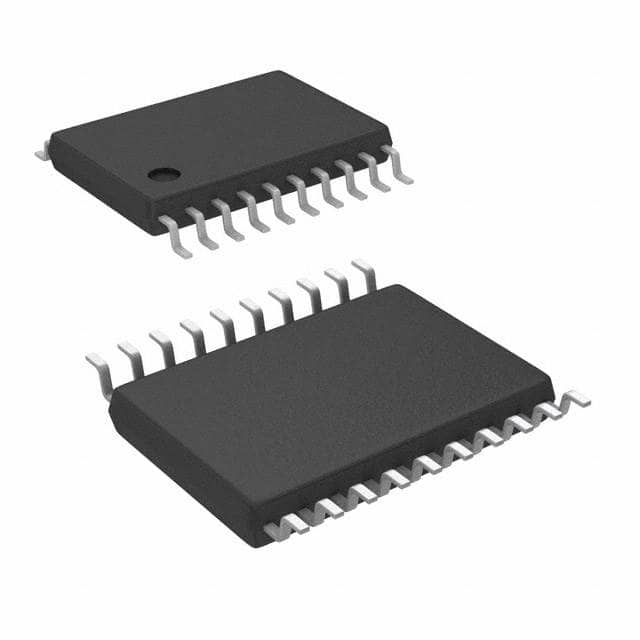Veja as especificações para detalhes do produto.

NCV8851-1DBR2G
Product Overview
Category
The NCV8851-1DBR2G belongs to the category of integrated circuits (ICs).
Use
This product is primarily used for power management applications.
Characteristics
The NCV8851-1DBR2G is known for its high efficiency and low power consumption. It offers reliable performance and precise voltage regulation.
Package
The NCV8851-1DBR2G comes in a compact and durable package, ensuring easy handling and protection against external factors.
Essence
The essence of the NCV8851-1DBR2G lies in its ability to efficiently manage power and provide stable voltage output.
Packaging/Quantity
This product is typically packaged in reels or tubes, with a quantity of 2500 units per reel/tube.
Specifications
The NCV8851-1DBR2G has the following specifications:
- Input Voltage Range: 4.5V to 40V
- Output Voltage Range: 0.8V to 5.5V
- Maximum Output Current: 3A
- Switching Frequency: 500kHz
- Operating Temperature Range: -40°C to 125°C
Detailed Pin Configuration
The NCV8851-1DBR2G features the following pin configuration:
- VIN: Input voltage pin
- GND: Ground pin
- EN: Enable pin
- FB: Feedback pin
- SS: Soft-start pin
- PGND: Power ground pin
- SW: Switch node pin
- VOUT: Output voltage pin
Functional Features
The NCV8851-1DBR2G offers the following functional features:
- Wide input voltage range for versatile applications
- High efficiency and low power consumption
- Overcurrent protection
- Thermal shutdown protection
- Soft-start function for smooth power-up
Advantages and Disadvantages
Advantages
- High efficiency leads to reduced power loss
- Wide input voltage range allows for flexibility in various applications
- Comprehensive protection features ensure reliable operation
- Compact package size enables space-saving designs
Disadvantages
- Limited maximum output current may not be suitable for high-power applications
- Higher cost compared to some alternative models
Working Principles
The NCV8851-1DBR2G operates based on a switching regulator topology. It utilizes pulse-width modulation (PWM) techniques to regulate the output voltage. The integrated circuit efficiently converts the input voltage to the desired output voltage by controlling the duty cycle of the switching transistor.
Detailed Application Field Plans
The NCV8851-1DBR2G finds application in various fields, including:
- Automotive: Power management in electric vehicles, hybrid vehicles, and automotive electronics.
- Industrial: Power supply for industrial automation systems, motor control, and instrumentation.
- Consumer Electronics: Power management for portable devices, home appliances, and audio/video equipment.
Detailed and Complete Alternative Models
Some alternative models that offer similar functionality to the NCV8851-1DBR2G include:
- LM2596-ADJ: A popular buck converter IC with adjustable output voltage.
- LT1763: Low dropout linear regulator with high accuracy and low noise.
- TPS54331: Synchronous step-down DC-DC converter with wide input voltage range.
These alternative models can be considered based on specific requirements and design constraints.
In conclusion, the NCV8851-1DBR2G is a highly efficient and versatile power management IC. With its precise voltage regulation, comprehensive protection features, and compact package, it finds application in various industries. While it has certain limitations, alternative models can be explored to meet specific design needs.
Liste 10 perguntas e respostas comuns relacionadas à aplicação de NCV8851-1DBR2G em soluções técnicas
Sure! Here are 10 common questions and answers related to the application of NCV8851-1DBR2G in technical solutions:
Q1: What is NCV8851-1DBR2G? A1: NCV8851-1DBR2G is a specific model of integrated circuit (IC) designed for automotive applications, particularly in power management and control systems.
Q2: What are the key features of NCV8851-1DBR2G? A2: Some key features of NCV8851-1DBR2G include high voltage capability, low quiescent current, overvoltage protection, thermal shutdown, and various diagnostic features.
Q3: What are the typical applications of NCV8851-1DBR2G? A3: NCV8851-1DBR2G is commonly used in automotive systems such as body control modules, lighting control units, HVAC systems, and other power management applications.
Q4: How does NCV8851-1DBR2G help in power management? A4: NCV8851-1DBR2G provides efficient power conversion, voltage regulation, and protection features that help optimize power usage and protect sensitive components in automotive systems.
Q5: Can NCV8851-1DBR2G handle high voltages? A5: Yes, NCV8851-1DBR2G is designed to handle high voltages typically found in automotive systems, making it suitable for use in various power management applications.
Q6: Does NCV8851-1DBR2G have any built-in protection features? A6: Yes, NCV8851-1DBR2G includes overvoltage protection, thermal shutdown, and various diagnostic features to ensure safe operation and protect the IC and connected components.
Q7: Is NCV8851-1DBR2G compatible with other automotive ICs? A7: Yes, NCV8851-1DBR2G is designed to be compatible with other automotive ICs, allowing for seamless integration into existing systems and designs.
Q8: What is the operating temperature range of NCV8851-1DBR2G? A8: The operating temperature range of NCV8851-1DBR2G typically extends from -40°C to +125°C, making it suitable for automotive applications in various climates.
Q9: Can NCV8851-1DBR2G be used in non-automotive applications? A9: While NCV8851-1DBR2G is primarily designed for automotive applications, it may also find use in other industrial or power management applications that require similar features.
Q10: Where can I find more information about NCV8851-1DBR2G? A10: You can refer to the datasheet, application notes, and technical documentation provided by the manufacturer of NCV8851-1DBR2G for detailed information about its specifications, usage guidelines, and application examples.

